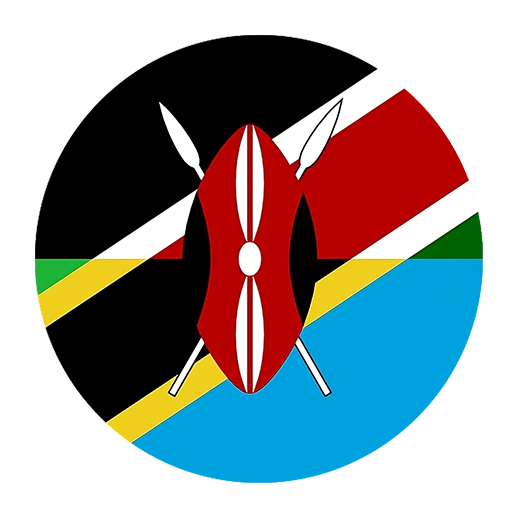Learning a new language is a rewarding endeavor that opens doors to new cultures, perspectives, and opportunities. One of the exciting languages to learn is Swahili, a Bantu language spoken in various countries across East Africa, including Kenya, Tanzania, Uganda, and the Democratic Republic of the Congo. Among the many aspects of Swahili grammar, understanding the comparative and superlative forms of adjectives is essential for effective communication. This article will guide you through the intricacies of forming and using comparative and superlative adjectives in Swahili.
Basic Adjective Structure in Swahili
Before diving into the comparative and superlative forms, it’s crucial to understand the basic structure of adjectives in Swahili. Adjectives in Swahili typically follow the noun they describe, unlike in English where adjectives usually precede the noun. For example:
– Mtoto mzuri (a good child)
– Nyumba kubwa (a big house)
Swahili adjectives agree with the noun they modify in terms of noun class and number. This agreement is essential for the grammatical correctness of a sentence.
Comparative Forms
Comparative adjectives are used to compare two nouns, indicating that one has a higher degree of a particular quality than the other. In Swahili, the comparative form is constructed by using the word “kuliko” which means “than.” The structure is as follows:
**Noun 1 + adjective + kuliko + Noun 2**
Let’s look at some examples:
1. Mwanafunzi huyu ni mwerevu kuliko yule.
– This student is smarter than that one.
2. Nyumba hii ni kubwa kuliko ile.
– This house is bigger than that one.
3. Gari hili ni ghali kuliko lile.
– This car is more expensive than that one.
In these examples, “kuliko” serves as the comparative marker, indicating that the first noun has a greater degree of the quality described by the adjective than the second noun.
Forming Comparatives with “Zaidi”
Another way to form comparatives in Swahili is by using the word “zaidi,” which means “more.” This method is particularly useful when comparing quantities or degrees rather than qualities. The structure is:
**Noun 1 + adjective + zaidi ya + Noun 2**
Examples include:
1. Mtoto huyu ni mwerevu zaidi ya yule.
– This child is more intelligent than that one.
2. Chakula hiki ni kitamu zaidi ya kile.
– This food is tastier than that one.
3. Kazi hii ni ngumu zaidi ya ile.
– This job is harder than that one.
In these sentences, “zaidi ya” functions similarly to “kuliko,” providing an alternative way to express comparisons.
Using “Kushinda” for Comparatives
“Kushinda” is another term used to indicate comparison, and it means “to surpass” or “to exceed.” This term is often used in more formal or literary contexts. The structure is:
**Noun 1 + adjective + kushinda + Noun 2**
Examples:
1. Mwanafunzi huyu ni mwerevu kushinda yule.
– This student is more intelligent than that one.
2. Nyumba hii ni kubwa kushinda ile.
– This house is bigger than that one.
3. Gari hili ni ghali kushinda lile.
– This car is more expensive than that one.
Superlative Forms
Superlative adjectives express the highest degree of a quality within a group. In Swahili, superlatives are formed using the word “zaidi” (most) or “mno” (very/most), typically followed by the adjective. The structure is:
**Noun + adjective + zaidi/mno**
Examples include:
1. Huyu ni mwanafunzi mwerevu zaidi.
– This is the smartest student.
2. Hii ni nyumba kubwa zaidi.
– This is the biggest house.
3. Hili ni gari ghali zaidi.
– This is the most expensive car.
Alternatively, “mno” can be used to emphasize the superlative degree:
1. Huyu ni mwanafunzi mwerevu mno.
– This is the very smartest student.
2. Hii ni nyumba kubwa mno.
– This is the very biggest house.
3. Hili ni gari ghali mno.
– This is the very most expensive car.
Superlative Forms with “-ote” Suffix
In Swahili, the suffix “-ote” can also be used to indicate a superlative form, implying “of all.” The structure is:
**Noun + adjective + -ote**
Examples include:
1. Huyu ni mwanafunzi mwerevu kuliko wote.
– This is the smartest student of all.
2. Hii ni nyumba kubwa kuliko zote.
– This is the biggest house of all.
3. Hili ni gari ghali kuliko yote.
– This is the most expensive car of all.
In these cases, “kuliko wote/zote/yote” emphasizes that the noun possesses the highest degree of the quality compared to all others in the group.
Common Adjective Exceptions
While the rules for forming comparative and superlative adjectives in Swahili are generally straightforward, there are some exceptions and irregularities to be aware of.
1. **Adjectives of Quantity:** Adjectives that describe quantity, such as “kidogo” (a little) and “chache” (few), have unique comparative and superlative forms. For example:
– Kidogo (a little) -> Kidogo kuliko (less)
– Chache (few) -> Chache kuliko (fewer)
2. **Irregular Adjectives:** Some adjectives have irregular comparative and superlative forms. For instance:
– Mzuri (good) -> Bora kuliko (better) -> Bora zaidi (best)
Adjective Agreement and Noun Classes
Swahili nouns are categorized into different classes, and adjectives must agree with the noun class of the noun they modify. This agreement extends to comparative and superlative forms as well. Here is a brief overview of noun classes and their agreement markers:
1. **M-Wa Class:**
– Mtu mzuri (a good person)
– Watu wazuri (good people)
2. **Ki-Vi Class:**
– Kitabu kizuri (a good book)
– Vitabu vizuri (good books)
3. **M-Mi Class:**
– Mti mzuri (a good tree)
– Miti mizuri (good trees)
4. **N Class:**
– Nyumba nzuri (a good house)
– Nyumba nzuri (good houses)
When forming comparative and superlative adjectives, the agreement markers must be maintained. For example:
– Mti huu ni mzuri kuliko ule. (This tree is better than that one.)
– Vitabu hivi ni vizuri zaidi. (These books are the best.)
Practical Applications and Examples
Understanding comparative and superlative forms in Swahili is crucial for various real-life situations, such as making comparisons, giving recommendations, and expressing preferences. Here are some practical scenarios:
1. **Shopping:**
– Swahili: Gari hili ni ghali kuliko yale mengine.
– English: This car is more expensive than the others.
2. **Travel:**
– Swahili: Hoteli hii ni nzuri zaidi mjini.
– English: This hotel is the best in town.
3. **Education:**
– Swahili: Shule hii ni bora kuliko zote.
– English: This school is the best of all.
4. **Dining:**
– Swahili: Chakula hiki ni kitamu zaidi kuliko kile.
– English: This food is tastier than that one.
Common Mistakes and Tips
When learning to form and use comparative and superlative adjectives in Swahili, learners often make some common mistakes. Here are a few tips to avoid these pitfalls:
1. **Incorrect Use of “Kuliko” and “Zaidi”:**
– Ensure you use “kuliko” for general comparisons and “zaidi ya” for emphasizing quantity or degree.
2. **Adjective Agreement:**
– Always ensure that adjectives agree with the noun class of the nouns they modify. This includes maintaining agreement in comparative and superlative forms.
3. **Overuse of Superlatives:**
– Avoid overusing superlatives in everyday conversation. While they are useful, overuse can make speech sound exaggerated or unnatural.
4. **Practice:**
– Regular practice is key to mastering comparative and superlative forms. Engage in exercises, dialogues, and writing activities to reinforce your understanding.
Conclusion
Mastering comparative and superlative forms in Swahili adjectives is a significant step toward fluency in the language. By understanding the basic structure, agreement rules, and various methods of forming these adjectives, you can effectively express comparisons and preferences in Swahili. Remember to practice regularly and pay attention to noun class agreements to ensure grammatical accuracy. With dedication and practice, you’ll find yourself confidently using comparative and superlative adjectives in your Swahili conversations.
Happy learning, and enjoy your journey into the beautiful world of Swahili!

